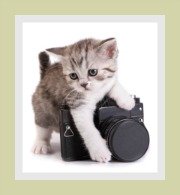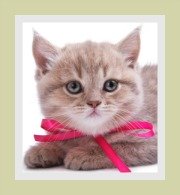Cat Litter Box
Tips on Selecting the Right Litter Pan
The cat litter box is an essential 'toiletry' item for an indoor cat.
Owners of outdoor cats often provide their cats with litter trays in order to 'monitor' the cat's toilet habits for health care reasons.
Why your cat needs a litter box.
For wild cats (and domesticated cats) it is a natural instinct to bury their waste.
Cats like to dig a hole, deposit urine and feces in the hole and then cover it up afterwards.
They do this for two reasons:
-
Mask their presence, meaning they don't advertise their whereabouts to other cats (or other predators).
- Felines are exceptionally clean creatures and they like to keep their toilet areas clean.
types of litter boxes
Choosing the right receptacle (and filler) is important and will go a long way towards keeping both cat and cat-owner happy.
There has been significant innovation in this market. Today you have a wide selection to choose from.
There are inexpensive, disposable boxes, sturdy plastic pans and the more luxurious, automatic, self-cleaning litter units.
For discerning home-owners or those cat-lovers looking for a hidden kitty box, there is cabinet-type cat-furniture, designed to blend into the most stylish decor.
Cats are fussy creatures, so don't become despondent if your cat rejects your initial purchase.
|
Mechanical or Electronic self-cleaning kitty cat litter units |
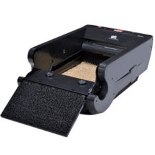 |
|
Stylish, multi-functional and versatile litter pan covers and Covered Kitty Litter Boxes |
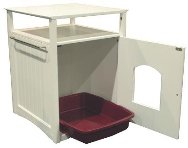 |
|
Plastic or Metal cat litter trays and pans |
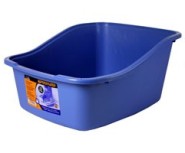 |
|
Biodegradable boxes, throw-away cat litter trays |
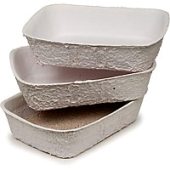 |
litter box training
Generally, a kitten does not need to be taught how to use a litter tray or pan - once you have shown the kitten where to go, it will generally return to the spot.
Litter training a cat is really a case of waiting until the kitten is 3 weeks old - at this time the urinating and defecating reflexes will trigger and you can introduce the kitten to its kitty box and litter.
To avoid cat litter box problems later on, it's important to ensure that you have the right litter tray and cat litter. (e.g. Clumping cat litter is dangerous for kittens).
Be patient, kind and gentle when introducing your new kitten to its cat box.
We have compiled a guide for cat owners who need to know why their kitten or cat is not using the litter box.
location of the litter box
All cats, wild or domesticated, like a secluded, private area to hide when relieving themselves.
They need a spot where they are undisturbed and less vulnerable to other cats, small children and dogs.
Place the pan or tray in a quiet area, out of the way of all family activities e.g:
- A low traffic bathroom
- Spare or guest room
- Enclosed balcony or patio
- Basement
- Closet
- In multi-level apartments or large homes you may need more than one litter box placed in different secluded areas
additional requirements
Your shopping trip will most certainly include the following:
- Cat Litter - choose between clay, natural or silica gel litter
- Cat Litter Mat - this reduces tracking and 'holds' all the spillage
- Scoop - to remove all the waste
- Liners - protect the litter box and absorbs all odors
- Disinfectants and Deodorizers to clean the box and reduce odors
Top of Cat Litter Box Page
